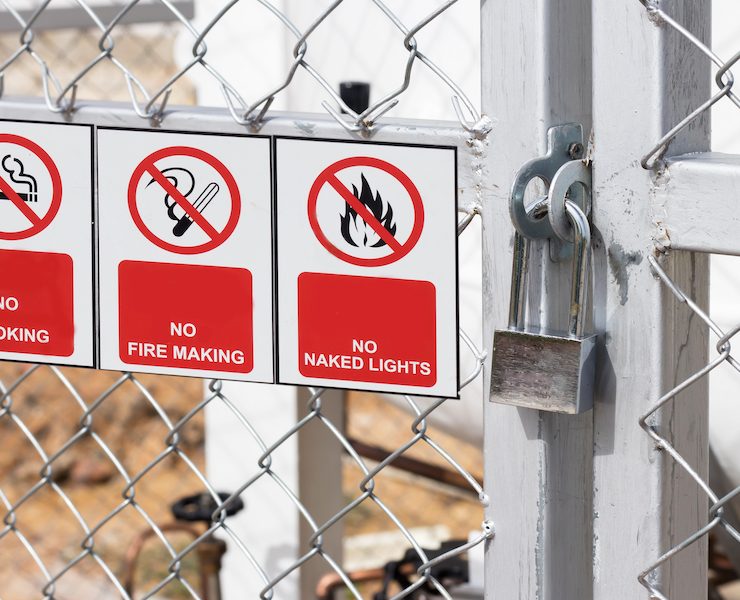Pile Drivers and the U.S. Supreme Court

A Storied Foundation of Construction Law
It’s time to impress your colleagues at the next charity golf tournament with your knowledge of dusty, but, applicable Supreme Court cases about pile driving. Surprisingly, they not only exist — they are the cornerstone of modern American legal principles applicable to all construction — so there. Your industry has, as they say, bragging rights. Also, these cases come in handy when you face a claim setting and your attorney, or claims consultant, needs a lifeline — these cases will impress them, as well, if you know them by name. Don’t worry — there is no test at the end.
Most heavy contractors building either cofferdams or deep foundations are familiar with “The Spearin Doctrine” that basically says, you can sue the owner when your costs skyrocket because the plans are no good and did not work.
In that 1918 decision, the Supreme Court of the United States (“SCOTUS” in legal circles) faced a situation where a contractor building a dry dock in Brooklyn Harbor for the U.S. Navy could not get the dock to drain because New York City had built an underground sewer works that continued to pour into the waterway where the dry dock was being built.
After years of trying and failing, the contractor walked — abandoned the project. The Government sued for its extra cost, on the theory that the contractor promised to build it — no ifs, ands, or buts.
Philadelphia, 181 Pa. 530; Bentley v. State, 73 Wis. 416. See Sundstrom v. New York, 213 N.Y. 68. This responsibility of the owner is not overcome by the usual clauses requiring builders to visit the site, to check the plans, and to inform themselves of the requirements of the work, as is shown by Christie v. United States, 237 U.S. 234; Hollerbach v. United States, 233 U.S. 165, and United States v. Stage Co., 199 U.S. 414, 424, where it was held that the contractor should be relieved if he was misled by erroneous statements in the specifications.
But — and get this — the really good stuff is in Christie v. U. S., a 1915 case involving wooden sheet piling for a cofferdam in the Warrior River in Alabama, where the contractor incurred extra costs because of obstructions encountered (sunken logs) in the soil layers under the river bed.
The resident engineer had decided that the borings that were failed due to obstructions were not necessary to be shared with the contractor and SCOTUS disagreed. The court held that their failure to share that information created misleading contract documents, even if unintentional, it concealed the true soil conditions affecting the basis of bid and work:
… borings were made, and that the drill met “obstructions which from the particles broken off and floating to the surface would indicate they might be logs.” These obstructions, though in some instances noted because of the formation, were not indicated on the drawings… When such obstructions were met, the apparatus was moved elsewhere until a place was found where the drill would penetrate, and the result was recorded as if taken at the place staked out… The boring sheets referred to in paragraph 48 of the specifications contained only the record of completed borings, and do not show any record of sunken logs, or of cemented sand and gravel, or conglomerate impenetrable by the drill.
The indications of buried logs were called to the attention of the resident engineer, and he was asked if they should be noted in the record of borings, to which he replied that he did not consider them of enough importance to be noted. [OOPS]… It would seem as if there could be only one conclusion from these findings. There was a deceptive representation of the material, and it misled… It makes no difference to the legal aspects of the case that the omissions from the records of the results of the borings did not have sinister purpose. There were representations made which were relied upon by claimants, and properly relied upon by them, as they were positive. Hollerbach v. United States, 233 U.S. 155. Besides, it was admitted at the argument that time did not permit borings to be made by claimants. We think it was error, therefore, to have disallowed the damage resulting therefrom.
Those two decisions, Spearin and Christie, pretty much sum it up. But there is more, if you need a) need some light reading to get to sleep, b) have a big claim deadline tomorrow, or, c) wonder why judges talk so funny.
HERE IS A QUICK DAVID LETTERMAN TOP TEN LIST, ACTUALLY, A TOP THREE, OF PILE DRIVING CASES YOU ALWAYS (OR NEVER) WANTED TO KNOW:
KIT-SUN-AZUZA V. U.S. (FED CIR. 1996) 86 F3RD 1173
This case is another boring log/differing site conditions (DSC) case — nested cobbles, the worst:
After a careful review of the arguments, we agree with the Court of Federal Claims that KSA encountered a differing site condition. As did the Court of Federal Claims, we take USBR’s insistence that sheet pile be used to construct the cofferdam as a reinforcement of the drill logs’ conclusions that boulders and large amounts of cobbles would not be present in the soil to hinder the pile driving. Although KSA was on some notice that boulders might be present based on USBR’s generalized description of the OPP area, KSA was entitled to rely on the more specific drill logs showing no boulders or nested cobbles at the OPP site.
J. L. SIMMONS V. U.S. (1969) 412 F 2D 1360
A case where the piling contractor hit obstructions, the precoring option was deleted from the specifications and the contractor was left to fend for himself. The government lost and the case talks about the concept of state-of-the-art — where the contractor unfairly is asked to build beyond the then existing engineering practice and make it up as it goes:
Precoring as an aid to penetration, as specified in the Ann Arbor contract, was a common method of punching or drilling a hole through hard obstructions to enable a pile to reach the bearing stratum… The fact that such a provision was deleted after first appearing in the Chicago Specifications was a circumstance directly related to design evaluation of the subsurface conditions to be encountered, and it afforded, in our opinion, a significant indication of the scope of the Government’s undertaking to provide specifications as to the methods of installation to be employed by the contractor… The action of the Government in omitting any precoring provision would, under the circumstances, have reasonably led bidders to believe that the possibility of need for precoring for any purpose had been considered and rejected by the designers, and that the design being furnished would not require precoring for the subsurface conditions to be encountered.
… We conclude that precoring as a standard and effective method of volume control was beyond the state-of-the-art in 1950. It was not a procedure contractors could have been expected to include in their bids in the absence of a specified requirement.
The Board then summarized its findings on this claim as follows:
… No one anticipated the intensity and cumulative effect of displacement pressures that were later experienced. It was not until the damage was done that soils scientists analyzed the results to establish the cause. Appellant cannot be charged with foresight greater than the design engineers themselves possessed.
We find on authority of Hedin that Appellant was entitled to rely on the accuracy and suitability of the Government’s specifications and on the engineering data it furnished bidders. The Government directed that the foundation be constructed in a specified way and must stand responsible for the results of its plan. Spearin v. United States, 51 Ct.Cl. 155, affirmed 248 U.S. 132, 136).
… From Appellant’s point of view it had called the pile movement problem to the attention of the Government and had repeatedly asked for instructions but had received nothing but suggestions and advice to continue driving. With the work already far behind schedule because of Testing delays and with the prospects of future movement unknown and unascertainable without investigation by soil experts, Appellant was entitled to receive instructions from the Government and had no duty to stop the job and have an investigation made of the cause of the difficulty and evaluation of future effects.
The Government, having been notified that the design was in jeopardy because of subsurface conditions and effects were obligated to determine the existing conditions and if necessary revise the contract plans… (citing Hedin) The Government’s decision was to allow Appellant to drive out the remaining 366 piles without any change in methods and without any controls other than the continuation of surveys.
The result was that the damage resulting from the design error that had been committed in specifying a displacement type foundation continued in such cumulative fashion as to greatly increase, and possibly surpass, the damage that had existed when the movements were discovered and made known to the Government on June 24, 1950. We conclude that the Government is financially responsible for the costs of correcting the damage that resulted from failure of the specified design.
FEHLHABER CORP. V. U.S. (CT.CL. 1957) 151 F SUPP 817
This case stands for the proposition that even if the government’s specifications say the bidders can do their own borings, if there is not enough time practically do to so, those warnings do not prevent recovery when the government’s soils report proves materially inaccurate:

















